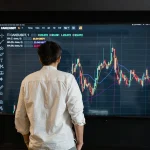How Forex Trading Hours Affect Market Liquidity
In Forex trading, the market operates 24 hours a day, 5 days a week, but this doesn’t mean that liquidity is constant throughout the day. Market liquidity, which refers to the ability to buy or sell assets without causing significant price movements, is one of the most important factors that traders should understand when participating in the Forex market.

The 24-Hour Forex Market
Unlike traditional stock markets, which are open during specific hours based on the country in which they are located, the Forex market operates continuously throughout the week. It opens on Sunday evening and closes on Friday evening (Eastern Standard Time), with various trading sessions that overlap and influence the market’s behavior.
The Forex market operates in four main trading sessions:
- Asian Session (Tokyo): The Asian session starts the trading day. It’s known for its relatively lower volatility compared to the European and American sessions.
- European Session (London): The London session is the most active trading period due to the high volume of traders and the overlap with the U.S. session.
- U.S. Session (New York): This session sees a high amount of liquidity, especially when it overlaps with the European session, creating significant market movement.
- Pacific Session (Sydney): The Sydney session is the least volatile, often leading to the lowest trading volume during the early part of the week.
The overlap between the European and U.S. sessions (from 8:00 AM to 12:00 PM EST) is often considered the best time to trade due to the increased market liquidity and volatility.
What Affects Forex Market Liquidity?
Market liquidity in Forex is largely affected by two factors: the volume of trades being executed and the volatility of the market. These factors fluctuate throughout the trading day based on various events, news releases, and the time of day.
1. Trading Volume
The more participants there are in the market, the higher the liquidity. The most liquid currency pairs are those that are frequently traded by institutional investors, hedge funds, banks, and other market participants. These pairs, such as EUR/USD, GBP/USD, and USD/JPY, tend to have tighter spreads and more consistent prices because there are so many buyers and sellers.
2. Economic News and Events
Major economic events, such as central bank interest rate decisions, employment reports, GDP figures, and geopolitical events, can cause sudden changes in market liquidity. For example, an interest rate hike by the U.S. Federal Reserve can trigger a significant shift in the USD’s value, leading to higher volatility and reduced liquidity as traders react to the news.
Traders need to stay informed about economic calendars and news releases that may impact market liquidity. Trading during important events can increase the potential for profit but also increases the risk of large price movements and slippage.
3. Time of Day
Market liquidity is generally higher when multiple major trading centers are open simultaneously. The best times to trade Forex are during the overlap of major market sessions, specifically when the London and New York sessions coincide. This period offers increased liquidity and volatility, making it a prime time for day traders and scalpers to execute their strategies.
How to Take Advantage of Market Liquidity
To maximize your potential for profit in the Forex market, it’s essential to understand the relationship between trading hours and market liquidity. Here are a few tips to help you navigate the market more effectively:
1. Trade During High Liquidity Hours
As mentioned earlier, liquidity is highest during the overlap between the European and U.S. trading sessions. During this period, market volatility tends to be higher, and traders can take advantage of bigger price movements. If you are a day trader or scalper, this is the ideal time to execute quick trades.
2. Avoid Trading During Low Liquidity Hours
The early hours of the U.S. session, as well as the Sydney and Tokyo sessions, tend to have lower liquidity. During these times, the market may experience sluggish price movements, wide spreads, and fewer trade opportunities. While it’s not impossible to trade during these hours, it’s generally better to avoid them unless you have a specific strategy for these low liquidity times.
3. Use Limit Orders
When trading in periods of high volatility, it’s a good idea to use limit orders rather than market orders. A limit order allows you to set a specific price at which you want to buy or sell an asset. This ensures that you don’t get filled at an unfavorable price during periods of high volatility when liquidity is lower, and prices can move rapidly.
4. Watch for Slippage
Slippage occurs when there is a difference between the expected price of a trade and the actual price at which the trade is executed. It happens when there is low liquidity, and prices move quickly due to news events or volatile market conditions. During periods of high liquidity, slippage is less likely, so it’s beneficial to trade during active sessions.
Forex Liquidity and Risk Management
Market liquidity has a direct impact on risk management. The more liquid the market, the easier it is to execute trades without significant slippage. On the other hand, low liquidity can make it harder to enter or exit positions, especially when large price movements occur. Understanding the dynamics of Forex liquidity will help you develop more effective risk management strategies, such as adjusting stop-loss levels or using proper position sizing to protect your capital during times of low liquidity.




